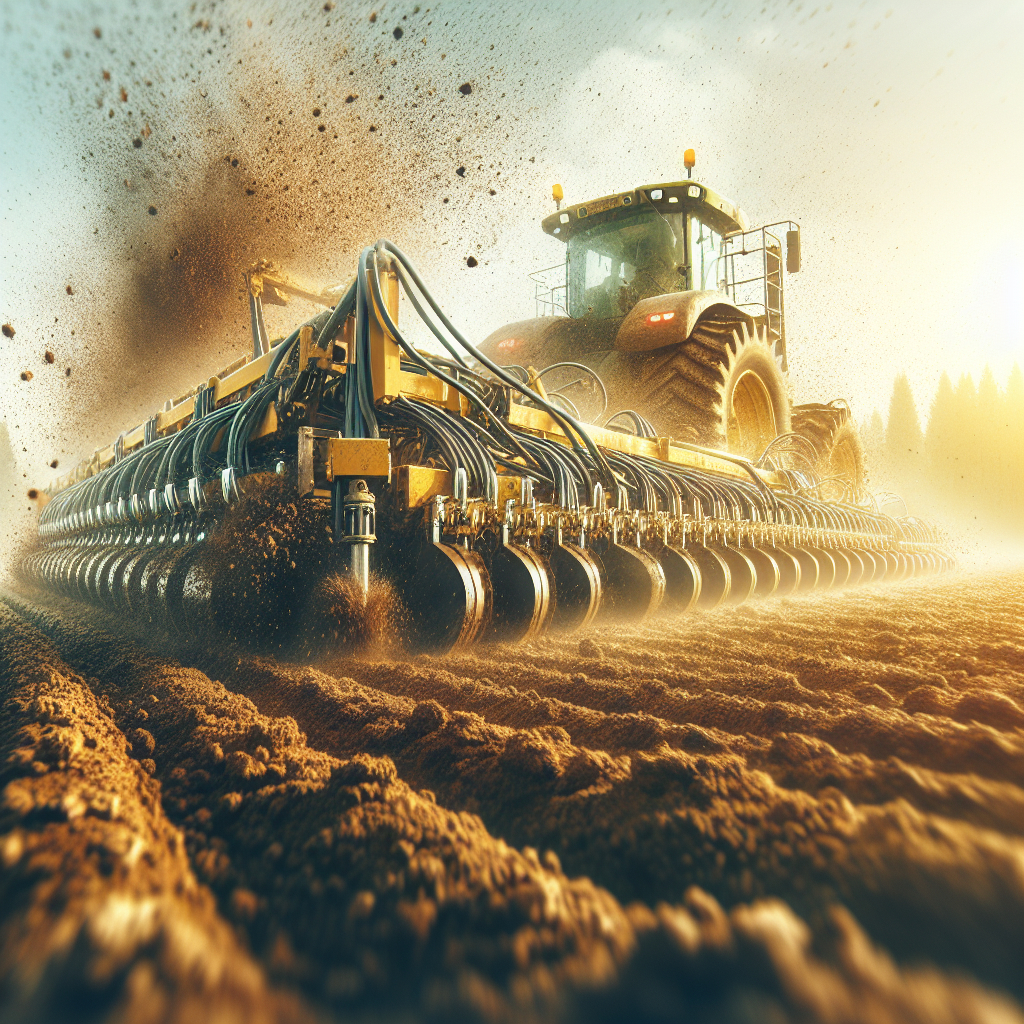Plowing and soil aeration are critical components of successful farming and gardening. These practices not only prepare the soil for planting but also enhance its health and productivity. Understanding the importance of plowing and soil aeration can lead to better crop yields and a more sustainable agricultural system.
The Importance of Plowing
Plowing is the process of turning over the upper layer of soil, bringing fresh nutrients to the surface while burying weeds and the remains of previous crops. This practice has been used for centuries to prepare fields for planting. The primary benefits of plowing include improved soil structure, enhanced nutrient availability, and better weed control.
Improved Soil Structure
One of the main advantages of plowing is the improvement of soil structure. By turning over the soil, plowing breaks up compacted layers, allowing roots to penetrate more easily. This leads to better root development and stronger, healthier plants. Additionally, plowing helps to mix organic matter into the soil, which improves its texture and water-holding capacity.
Enhanced Nutrient Availability
Plowing also plays a crucial role in enhancing nutrient availability. When the soil is turned over, nutrients that were previously locked in the lower layers are brought to the surface, where they can be accessed by plant roots. This process also helps to incorporate organic matter, such as compost or manure, into the soil, further enriching it with essential nutrients.
Better Weed Control
Weeds can be a significant problem for farmers and gardeners, competing with crops for nutrients, water, and sunlight. Plowing helps to control weeds by burying them under the soil, where they are less likely to grow. This reduces the need for chemical herbicides and promotes a healthier, more sustainable farming system.
The Role of Soil Aeration
Soil aeration is the process of creating small holes in the soil to allow air, water, and nutrients to penetrate more deeply. This practice is essential for maintaining healthy soil and promoting robust plant growth. The benefits of soil aeration include improved root development, enhanced microbial activity, and better water infiltration.
Improved Root Development
Roots need oxygen to grow and function properly. Soil aeration helps to ensure that roots have access to the air they need by reducing soil compaction and creating pathways for air to reach the root zone. This leads to healthier, more extensive root systems, which can better support plant growth and increase crop yields.
Enhanced Microbial Activity
Soil is teeming with microorganisms that play a vital role in breaking down organic matter and releasing nutrients. Aeration helps to create a more favorable environment for these microorganisms by increasing the amount of oxygen in the soil. This, in turn, enhances microbial activity and promotes the decomposition of organic matter, leading to a more fertile soil.
Better Water Infiltration
Water infiltration is another critical aspect of soil health. Compacted soil can prevent water from penetrating deeply, leading to poor drainage and increased runoff. Soil aeration helps to alleviate compaction, allowing water to infiltrate more effectively. This not only improves water availability for plants but also reduces the risk of erosion and nutrient leaching.
Combining Plowing and Soil Aeration
While plowing and soil aeration are beneficial on their own, combining these practices can lead to even better results. Plowing prepares the soil by breaking up compacted layers and incorporating organic matter, while aeration ensures that air, water, and nutrients can penetrate deeply. Together, these practices create an optimal environment for plant growth and soil health.
Timing and Techniques
The timing and techniques used for plowing and soil aeration can significantly impact their effectiveness. Plowing is typically done in the fall or early spring, before planting. This allows the soil to settle and organic matter to decompose before crops are sown. Soil aeration, on the other hand, can be done throughout the growing season, depending on the soil conditions and the needs of the plants.
There are various techniques for plowing and soil aeration, each with its advantages and disadvantages. Traditional moldboard plows are effective at turning over the soil but can create a hardpan layer if used repeatedly. Chisel plows and disk plows are less likely to cause compaction and can be used to incorporate organic matter more effectively. For soil aeration, tools such as aerators, spiked rollers, and subsoilers can be used to create the necessary holes and channels in the soil.
Conclusion
Plowing and soil aeration are essential practices for maintaining healthy, productive soil. By understanding the benefits of these techniques and implementing them effectively, farmers and gardeners can improve soil structure, enhance nutrient availability, and promote robust plant growth. Combining plowing and soil aeration can lead to even better results, creating an optimal environment for crops and contributing to a more sustainable agricultural system.
In summary, the importance of plowing and soil aeration cannot be overstated. These practices are fundamental to successful farming and gardening, and their benefits extend beyond immediate crop yields to long-term soil health and sustainability. By investing time and effort into proper plowing and soil aeration, we can ensure that our soils remain fertile and productive for generations to come.
